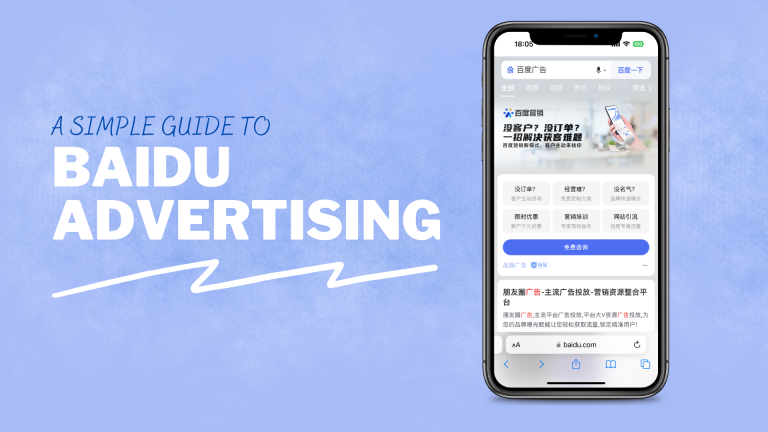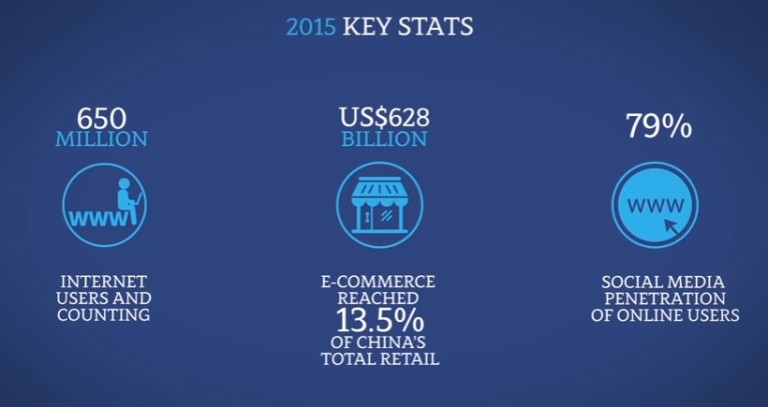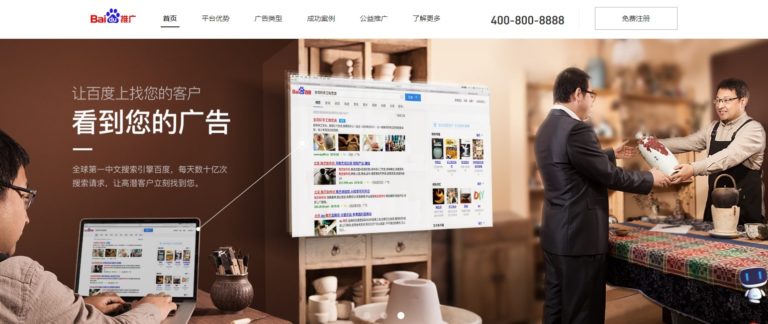4 Steps for Digital Marketing in China

Social networks are the key in China. WeChat, China’s largest social network with its 809 million active user accounts, is so integrated that 35% of the time users spend on smartphones is dedicated to this platform. The continued growth of Chinese social networks is mostly due to the “Great Firewall”, the government’s censorship tool that excludes Western social networks. It is then necessary to understand the environment of the social networks in China to have a successful Digital Marketing strategy in China.
1. You Must Know WeChat
A Digital Marketing strategy in China without WeChat is doomed to failure. The platform, formerly dedicated solely to messaging like Whatsapp, now includes a phenomenal amount of services ranging from payment to restaurant reservations. Several functions allow effective marketing communication on WeChat and include:
- Instant messaging, of course. WeChat’s primary function is to communicate directly with users and followers. This direct communication creates a very powerful user commitment.
- An active official brand page is a sine qua non-condition for high user engagement and allows to acquire new ones.
- Loyalty programs are a relevant item for a successful marketing campaign. Chinese consumers are fond of them, as well as digital coupons, VIP card, etc. They can be shared instantly and reputation.
- Micro-websites allow brands to increase their reputation and awareness. They can also create e-commerce pages, which can have incredible results, as was the case for Givenchy.
- Mini-programs (or mini-apps), are recent and allow to create original applications that one can use directly from WeChat, without downloading from an App Store. Their use is currently limited, but adjustments could lead to relevant marketing campaigns. Mini-games are particularly enjoyed by the Chinese.
- Geolocation allows very precise geographical targeting and allows a variety of campaigns. For example, Clarins cosmetics brand uses this feature to indicate to Chinese tourists abroad the nearest Clarins shop with Mandarin-speaking staff.
Luxury brands have everything to gain if they use WeChat correctly, as 6 out of 10 users go online to buy luxury goods. An active account and an intensive interactivity are the key to this good use.

2. Weibo: the Giant
The Sina Weibo platform has more than 300 million active monthly users. Often compared to Twitter, Weibo could reinvent itself in 2016, notably by adapting to Alibaba’s ecosystem (Taobao, Tmall, Aliexpress, Youku…). Weibo is basically a blogging platform, but also allows to share music, videos, create photo albums, play games… Marketing on Weibo focuses mainly on:
- Rich and quality content, containing many media (photos, videos). The information on Weibo is perceived as reliable by the users, and thus allows to increase one’s reputation.
- Key Opinion Leaders—KOLs, are the key to a successful communication in China. Their communities are generally very loyal and the engagement that KOLs create can be thousands of times superior to what a brand can do. It is therefore necessary to understand and know how to negotiate with the KOLs in order to use them in the best way, as was the case with Maybelline recently.
- Live-streaming is becoming very popular, with nearly 500 million daily viewing.
- Classic advertising is also possible, and relatively well accepted by users.
In short, Weibo is a very good platform for sharing quality content. The social network also makes it possible to launch effective viral campaigns.

3. Other social networks
Although WeChat and Weibo are two giants of social networks in China, one must not neglect their competitors who have useful functions to offer:
- QQ remains a popular platform with its 35 million unique users. Formerly the first social network in China, the platform still offers a good instant messaging service, but also online games, music… Interest groups make it possible to effectively target potential consumers, especially for niche brands.

- Nice is a photo-sharing application like Instagram, with 30 million registered users and 12 million monthly active users. Many brands have been seduced like Ray-Ban, Audi, Alexander Wang, etc. The application is particularly popular thanks to its Tags function, which allows KOLs to indicate the clothes and accessories that wear. Brands can also offer games and discounts on the application.

- Meipai can be considered as an “Instagram for video”. The platform is growing rapidly with 170 million users in July 2016. The application allows people to make 60-second videos, import photos, add effects and share their creations directly on Weibo and WeChat. KOLs like Fan Bingbing and Angelababy helped to increase the trend and encourage brands to try the platform.

Many other social networks exist, brands must then choose the one that best corresponds to their values and to the image they want to show.
4. Understanding the Chinese Consumer is the Key
Chinese consumers are now looking for experiences and want to be amazed by being told the history of the brand, sharing its intrinsic values. That is why old French brands succeed at reaching the Chinese audience. For example, Chanel, with the history of its famous founder.
But before telling their story, brands must know how to interact with the Chinese by getting closer to them on social networks. They must adapt their content to their target by adapting their language, their media, etc. It will be more appreciated and the users will share the content they like.

Social Media in China are important in China
In short, a good use of social networks is essential to any brand wishing to be successful in China. Reputation does everything, especially when we know how much the Chinese use forums before a purchase. It is then necessary to understand the specificities of each platform and the type of users that are targeted in order to convert them into sales.







I learned so much from this.Thank you , do you know if we can use Linkedin in China for B2B?